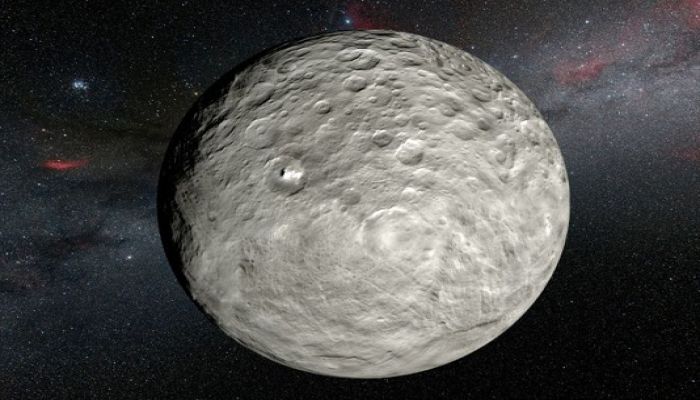
Desk Report
Publish: 11 Aug 2020, 01:30 pm

The dwarf planet Ceres — which has long been thought to be a frozen space rock — is an underwater world with lakes of seawater underneath its floor, the findings of a new discovery project revealed on Monday.
Ceres is the biggest body in the asteroid belt between Mars and Jupiter and has its own gravity, enabling the NASA Dawn spacecraft to take high-resolution photographs of its surface, reports AFP.
Now, a team of scientists from the United States and Europe has studied photos transmitted from the orbiter and collected about 35 kilometers (22 miles) of the asteroid.
They concentrated on the 20-million-year-old Occator crater and decided that there was a "extensive reservoir" of brine below its soil.
Several studies published Monday in the journals Nature Astronomy, Nature Geoscience and Nature Communications have shone more light on the dwarf planet found by Italian polymath Giuseppe Piazzi in 1801.
Using infrared imaging, one team discovered the presence of a compound hydrohalite — a mineral specific to sea ice, but had never been detected off Earth before now.
Maria Cristina De Sanctis, from Rome's Istituto Nazionale di Astrofisica, said that hydrohalite was a simple indication that Ceres used to have sea water.
“We can now say that Ceres is a sort of ocean world, as are some of Saturn’s and Jupiter’s moons,” she told AFP.
The team claimed the salt deposits appeared like they had developed up over the past two million years — a blink of an eye over space time.
This indicates that the brine could already be growing from the inside of the earth, which De Sanctis said may have significant consequences for potential studies.
“The material found on Ceres is extremely important in terms of astrobiology,” she said.
“We know that these minerals are all essential for the emergence of life.”
Writing in an accompanying comment article, Julie Castillo-Rogez, from the California Institute of Technology’s Jet Propulsion Laboratory, said the discovery of hydrohalite was a “smoking gun” for ongoing water activity.
“That material is unstable on Ceres’ surface, and hence must have been emplaced very recently,” she said.
In a separate paper, US-based researchers analysed images of the Occator crater and found that its mounds and hills may have formed when water ejected by the impact of a meteor froze on the surface.
The authors said their findings showed that such water freezing processes “extend beyond Earth and Mars, and have been active on Ceres in the geologically recent past”.
Subscribe Shampratik Deshkal Youtube Channel
© 2024 Shampratik Deshkal All Rights Reserved. Design & Developed By Root Soft Bangladesh